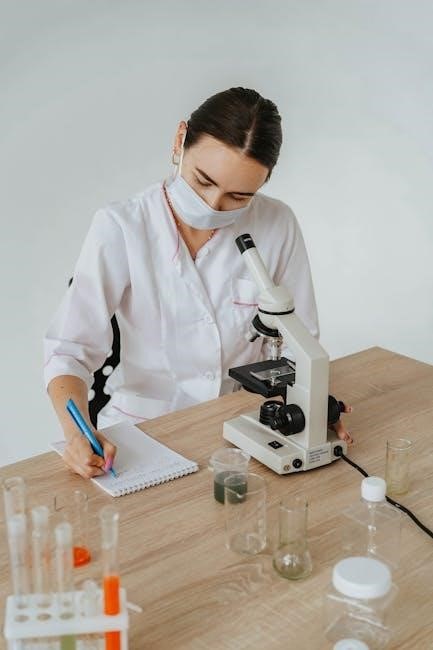The paper airplane experiment is a fun
science project
that teaches kids about aerodynamics and gravity using simple materials like paper and a flat surface to conduct tests.
Design and Construction of Paper Airplanes
The design and construction of paper airplanes is a crucial step in the experiment, requiring careful consideration of aerodynamic principles.
A well-designed paper airplane can fly smoothly and steadily, while a poorly designed one may stall or crash.
The construction of paper airplanes involves folding and creasing the paper to create the desired shape and structure.
Different designs can be used, such as the basic dart or the more complex glider.
The choice of design will depend on the goals of the experiment and the desired outcomes.
The construction process requires patience and attention to detail, as small variations in the design can affect the flight performance.
By following a set of instructions or using a template, individuals can create their own paper airplanes and test their flight capabilities.
The design and construction process is an essential part of the paper airplane experiment, allowing individuals to explore the principles of flight and aerodynamics.
Understanding the Four Key Forces of Flight
The four key forces of flight are weight, thrust, lift, and drag, which are essential to understand in the context of the paper airplane experiment.
These forces interact with each other to determine the flight performance of the paper airplane.
Weight is the downward force exerted by gravity, while thrust is the forward force that propels the airplane.
Lift is the upward force that counteracts weight and keeps the airplane flying, and drag is the backward force that slows it down.
Understanding the relationship between these forces is crucial to designing and constructing a paper airplane that can fly efficiently.
The Internet provides a wealth of information!
By analyzing the interplay of these forces, individuals can optimize their paper airplane design and improve its flight capabilities.
This knowledge is fundamental to the paper airplane experiment and can be applied to real-world aviation scenarios.

Conducting the Experiment
Conducting the experiment involves testing and evaluating the paper airplane’s flight performance using various methods and techniques online.
Picking a Variable to Test
To begin the experiment, it is essential to pick a variable to test, such as the length or weight of the paper airplane, and determine how it affects the flight performance.
The variable can be something as simple as the style of the plane or the position of weights on the plane, and it is crucial to choose one that can be easily measured and controlled.
The Internet provides a wealth of information on paper airplane experiments, including tips and guidelines for picking a variable to test and designing an experiment.
By picking a variable to test, individuals can gain a deeper understanding of the factors that affect the flight performance of paper airplanes and develop critical thinking skills.
The process of picking a variable to test is an essential part of the scientific method and is a crucial step in conducting a successful experiment.
Writing a Question for Investigation
Writing a question for investigation is a crucial step in the paper airplane experiment, as it helps to guide the research and focus the investigation.
The question should be specific, measurable, and relevant to the experiment, and should be phrased in a way that allows for a clear and concise answer.
According to online resources, a good question for investigation might be “How does the weight of the paper airplane affect its flight distance?” or “What is the effect of wing shape on the stability of the paper airplane?”
By writing a clear and focused question, individuals can ensure that their experiment is well-designed and effective.
The question for investigation should be based on the variable that has been chosen to test, and should be designed to gather useful and relevant data.
This will help to ensure that the experiment is successful and that the results are meaningful.
Gathering Data
Gathering data is a critical step in the paper airplane experiment, as it provides the information needed to answer the question for investigation.
The data should be collected in a systematic and controlled manner, using a data table or spreadsheet to record the results.
According to online resources, the data can include measurements such as flight distance, flight time, and drop height.
The data should be collected from multiple trials, with each trial repeated several times to ensure accuracy and reliability.
A data table can be used to organize the data, with columns for the different variables being tested.
The data can then be analyzed and graphed to help draw conclusions and answer the question for investigation.
By gathering accurate and reliable data, individuals can ensure that their experiment is well-designed and effective, and that the results are meaningful and useful.

Modifying the Original Design
Introducing a Low Level of Independent Variable
Analyzing the Results
Drawing Conclusions

Finalizing the Experiment

Using
- and
- tags helps to organize the final results and conclusions effectively online.
Recording the Final Results
To record the final results, use a table or chart to organize the data collected during the experiment, making it easier to compare and analyze the results.
The data should include the distance each plane flew, the design of the plane, and any other relevant factors that were tested. Additionally, using
- and
- tags can help to list the results in a logical and organized manner.
It is also important to include any observations or notes that were made during the experiment, as these can provide valuable insights into the results.
By recording the final results in a clear and organized manner, it is possible to draw meaningful conclusions and make recommendations for future experiments.
This will help to ensure that the results are accurate and reliable.